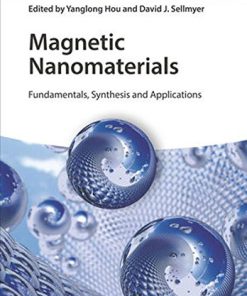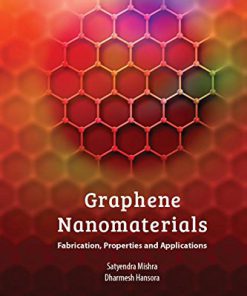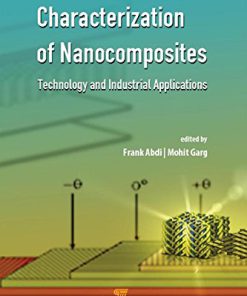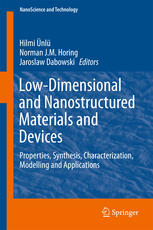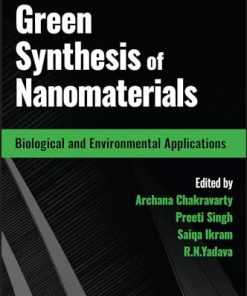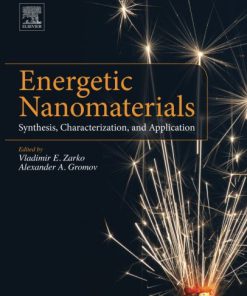Nanomaterials and Nanocomposites Synthesis Properties Characterization Techniques and Applications 1st Edition by Rajendra Kumar Goyal ISBN 1351649310 9781351649315
$50.00 Original price was: $50.00.$25.00Current price is: $25.00.
Nanomaterials and Nanocomposites Synthesis, Properties, Characterization Techniques, and Applications 1st Edition by Rajendra Kumar Goyal – Ebook PDF Instant Download/Delivery: 1351649310, 9781351649315
Full download Nanomaterials and Nanocomposites Synthesis, Properties, Characterization Techniques, and Applications 1st Edition after payment

Product details:
ISBN 10: 1351649310
ISBN 13: 9781351649315
Author: Rajendra Kumar Goyal
The main aims of this book are to summarize the fundamentals, synthesis methods, properties and applications of nanomaterials, so as to provide readers with a systematic knowledge on nanomaterials. In addition, the book covers most commonly used characterization tools pertaining to nanomaterials. Further, it deals with relevant aspects of nanocomposites which contains dispersion of nano-sized particulates, and carbon nanotubes (CNTs) in the matrices (polymer, metal and ceramic). It also discusses development of smart nano textiles (intelligent textiles), self-cleaning glass, sensors, actuators, ferro-fluids, and wear resistant nano coatings. Aimed at senior undergraduate and graduate students, the key features on this book include: Top-down and bottom-up approaches for the synthesis of nanomaterials included Illustrates sample preparation and basic principle of characterization tools for nanomaterials Explains calculation of ratios of surface area to volume and surface atoms to bulk atoms Reviews synthesis, properties and applications of carbon nanotubes and magnetic nanomaterials Discusses size effect on thermal, mechanical, optical, magnetic and electrical properties
Nanomaterials and Nanocomposites Synthesis, Properties, Characterization Techniques, and Applications 1st Table of contents:
1. Introduction to Nanomaterials and Nanotechnology
1.1 Introduction
1.2 Nanotechnology in Past
1.3 Nanotechnology in the Twenty-First Century
1.4 Classification of Nanomaterials
1.4.1 0-D Nanomaterials
1.4.2 1-D Nanomaterials
1.4.3 2-D Nanomaterials
1.4.4 3-D Nanomaterials
1.5 Size Effect on GBs
References
2. Length Scale and Calculations
2.1 Size Effect on Surface Area of Cubical Particles
2.2 Size Effect on Surface Atoms of Cubical Particles
2.3 Size Effect on Surface Atoms of Spherical Particles
References
Further Reading
3. Effect of Particle Sizes on Properties of Nanomaterials
3.1 Thermal Properties
3.1.1 Melting Point
3.1.2 Heat Capacity
3.1.3 Curie Temperature
3.1.4 Coefficient of Thermal Expansion
3.2 Electrical Properties
3.3 Lattice Constant
3.4 Phase Transformation
3.5 Mechanical Properties
3.5.1 Elastic Modulus
3.5.2 Hardness and Strength
3.5.3 Toughness
3.5.4 Fatigue and Creep
3.6 Magnetic Properties
3.7 Optical Properties
3.8 Wear Resistance
3.9 Chemical Sensitivity
3.10 Dielectric Constant
References
4. What Have We Learnt From the Nature and History?
4.1 Nanotechnology of Nature
4.1.1 Lotus Leaf
4.1.2 Morpho Butterfly
4.1.3 Peacock Feather
4.1.4 Cuttlefish
4.1.5 Water Strider
4.1.6 Spider Silks
4.1.7 Beetles
4.1.8 Glass Sponges (Euplectella)
4.1.9 Gecko
4.1.10 Chameleon
4.1.11 Abalone Nacre
4.1.12 Magnetotactic Bacteria
4.1.13 Antireflective Nanostructures of Moth Eyes
4.1.14 Natural Nanocomposite
4.1.15 Dentin
4.1.16 Natural Solar Cell
4.2 Nanotechnology in Ancient History?
4.2.1 Damascus Sword
4.2.2 Stained Glass
4.2.3 Maya Blue Paint
4.2.4 Age-hardened Aluminum Alloys
References
5. Synthesis of Nanomaterials
5.1 Top-Down Approaches
5.1.1 Mechanical Alloying
5.1.2 Severe Plastic Deformation
5.1.3 Lithography
5.2 Bottom-Up Approaches
5.2.1 Physical Vapor Deposition (PVD)
5.2.2 Molecular-Beam Epitaxy
5.2.3 Chemical Vapor Deposition
5.2.4 Colloidal or Wet Chemical Route
5.2.5 Reverse Micelle Method
5.2.6 Green Chemistry Route
5.2.6.1 Synthesis of Metallic NPs
5.2.6.2 Synthesis of Oxide NPs
5.2.6.3 Factors Affecting Size and Morphology of NPs
5.2.7 Sol-gel Method
5.2.8 Combustion Method
5.2.9 Atomic Layer Deposition
References
6. Synthesis, Properties, and Applications of Carbon Nanotubes
6.1 Introduction
6.2 Synthesis of CNTs
6.2.1 Arc Discharge Method
6.2.2 Laser Ablation
6.2.3 Chemical Vapor Decomposition
6.3 Characterization Techniques to Analyze the Purity
6.4 Purification of CNTs
6.4.1 Chemical Oxidation Method
6.4.2 Physical Method
6.5 Structures and Properties of CNTs
6.5.1 Structures
6.5.2 Electrical Properties of CNTs
6.5.3 Mechanical Properties
6.5.4 Thermal Properties
6.5.5 Thermoelectric Power
6.6 Applications of CNTs
6.6.1 Nanocomposites
6.6.2 Hydrogen Storage
6.6.3 Energy Storage Devices
6.6.4 Field Emission Emitters
6.6.5 Microelectronics
6.6.6 Electrical Brush Contacts
6.6.7 Sensors and Probes
6.6.8 Artificial Implants
6.6.9 Water Filters
6.6.10 Coatings
References
7. Synthesis, Properties, and Applications of Nanowires
7.1 VLS Method
7.2 Template Method
7.2.1 Electrochemical Deposition
7.2.2 Electroless Deposition
7.2.3 Pressure Injection Technique
7.3 Properties of NWs
7.3.1 Thermal Properties
7.3.1.1 Melting Point
7.3.1.2 Coefficient of Thermal Expansion
7.3.1.3 Thermal Conductivity
7.3.2 Optical Properties
7.3.3 Electrical Properties
7.4 Applications of NWs
7.4.1 Electronics
7.4.2 Thermoelectric Generator
7.4.3 Sensors
7.4.4 Magnetic Information Storage Devices
7.4.5 Solar Cell
7.4.6 Nanocomposites
References
8. Graphene
8.1 Introduction
8.2 Synthesis of Graphene
8.2.1 Mechanical Exfoliation
8.2.2 Chemical Exfoliation
8.2.3 Reduction of Graphene Oxide
8.2.4 Chemical Vapor Deposition
8.2.5 Dry Ice Reduction Method
8.3 Properties of Graphene
8.3.1 Structural Properties
8.3.2 Mechanical Properties
8.3.3 Thermal Properties
8.3.3.1 Thermal Conductivity
8.3.3.2 Thermal Expansion
8.3.3.3 Thermal Stability
8.3.4 Electrical Properties
8.4 Properties of Graphene/Polymer Nanocomposites
8.4.1 Mechanical Properties of Graphene Composites
8.4.2 Thermal Properties of Graphene Composites
8.4.3 Electrical Properties of Graphene Composites
8.4.4 Gas Barrier Properties
8.5 Applications of Graphene
References
9. Magnetic Nanomaterials
9.1 Introduction
9.2 Hysteresis M–H loop
9.3 Effect of Particle Size on M–H Loop
9.4 Surface Modification of Magnetic Nanoparticles
9.5 Applications of Magnetic Nanoparticles
9.5.1 Hyperthermia
9.5.2 Medical Diagnostics
9.5.3 Magnetic Cell Separation
9.5.4 Drug Delivery
9.5.5 Magnetic Refrigeration
9.5.6 Removal of Heavy Metals
9.5.7 Oil Removal
References
10. Processing, Properties, and Applications of Polymer Nanocomposites
10.1 Introduction
10.2 Polymer–Clay Nanocomposites
10.2.1 Structure of Montmorillonite
10.2.2 Fabrication of Polymer/Clay Nanocomposites
10.2.2.1 In Situ Polymerization Method
10.2.2.2 Solution Method
10.2.2.3 Melt-Mixing Method
10.2.3 Characterization of Polymer/Clay Nanocomposites
10.2.4 Properties of Polymer/Clay Nanocomposites
10.2.4.1 Thermal Properties
10.2.4.2 Permeability
10.2.4.3 Mechanical Properties
10.2.4.4 Abrasion and Wear Resistance
10.3 Polymer/CNT Nanocomposites
10.3.1 Electrical Properties
10.3.2 Mechanical Properties
10.3.3 Thermal Conductivity
10.4 Polymer/BN Nanocomposites
10.4.1 Mechanical Properties
10.4.2 Thermal Properties
10.4.3 Wear Resistance
10.5 Polymer/BaTiO Nanocomposites
10.5.1 Introduction
10.5.2 Preparation of PC/BaTiO Nanocomposites
10.5.3 Electrical Properties
10.5.4 Thermal Properties
10.5.5 Mechanical Properties
References
11. Polymeric Nanofibers
11.1 Synthesis of Polymeric Nanofibers
11.2 Parameter Affecting Diameter of Nanofibers
11.3 Properties of Nanofibers
11.3.1 Mechanical Properties
11.3.2 Magnetic Properties
11.3.3 Thermal Properties
11.3.4 Electrical Properties
11.4 Applications
11.4.1 Nanocomposite Fibers for Structural Applications
11.4.2 Nanogenerators
11.4.3 Nanofilters
11.4.4 Biomedical Application
11.4.5 Protective Fabric for Military
11.4.6 Functional Sensors
References
12. Characterization of Nanomaterials
12.1 X-Ray Diffraction
12.2 Optical Spectroscopy
12.2.1 Raman Spectroscopy
12.2.2 UV–vis Spectroscopy
12.2.3 Photoluminescence Spectroscopy
12.2.4 Fourier Transform Infrared Spectroscopy
12.3 Surface Area Analysis (BET Method)
12.4 Light Scattering Method
12.5 Electron Microscopy
12.5.1 Scanning Electron Microscopy
12.5.1.1 Basic Principle of SEM
12.5.1.2 Specimen Preparation for SEM
12.5.2 Transmission Electron Microscopy
12.5.2.1 Basic Principle of TEM
12.5.2.2 Specimen Preparation for TEM
12.6 Scanning Probe Microscopy
12.6.1 Basic Principle of STM
12.6.2 Atomic Force Microscopy
12.7 X-ray Photoelectron Spectroscopy
12.8 Thermal Analyzer
12.9 Zeta Potential
References
Further Reading
13. Corrosion Behavior of Nanomaterials
13.1 Introduction
13.2 Corrosion Resistance of Nanocrystalline Metals
13.3 Corrosion Resistance of Nanocomposite Coating
References
14. Applications of Nanomaterials
14.1 Nanofluids
14.1.1 Introduction
14.1.2 Stabilization of Nanofluids
14.1.3 Synthesis of Nanofluids
14.1.4 Applications of Nanofluids
14.1.4.1 Automotive Applications
14.1.4.2 Biomedical Applications
14.1.4.3 Coolants
14.1.4.4 Dynamic Seal
14.2 Hydrogen Storage
14.3 Solar Energy
14.3.1 Introduction
14.3.2 Photoelectrochemical Cells
14.3.3 Thermoelectric Devices
14.4 Antibacterial Coating
14.5 Giant Magnetoresistance
14.6 Single-Electron Transistor (SET)
14.7 Construction Industry
14.8 Self-Cleaning Coatings
14.8.1 Hydrophobic coating
14.8.2 Hydrophilic coatings
14.9 Nanotextiles
14.9.1 Textile Fabrics
14.9.2 Intelligent Textiles
14.10 Biomedical Field
14.10.1 Medical Prostheses
14.10.2 Drug Delivery
14.10.3 Cancer Treatment
14.10.4 Wound Dressing
14.10.5 Cosmetics
14.11 Nanopore Filters
14.12 Water Treatment
14.12.1 TiO2 Nanomaterials
14.12.2 CNT Powder
14.12.3 Zerovalent Metals
14.12.4 Dendrimers
14.12.5 Graphene
14.12.6 Polymeric Nanofibers
14.13 Nanodiamond
14.14 Automotive Sector
14.14.1 Introduction
14.14.2 Solar Energy
14.14.3 Fuel Cell
14.14.4 Vehicle Radiator
14.14.5 Diesel Particulate Filter
14.14.6 Other Applications
14.15 Catalysts
References
15. Risks, Toxicity, and Challenges of Nanomaterials
15.1 Introduction to Nanoparticle Risks and Toxicity
15.1.1 Dermal Exposure
15.1.2 Ingestion Exposure
15.1.3 Inhalation Exposure
15.2 Risks And Toxicity from Metallic Nanoparticle
15.3 Risks And Toxicity from Oxide Nanoparticle
15.4 Challenges
People also search for Nanomaterials and Nanocomposites Synthesis, Properties, Characterization Techniques, and Applications 1st:
Tags:
Rajendra Kumar Goyal,Nanomaterials,Nanocomposites Synthesis,Properties,Characterization Techniques,Applications
You may also like…
Biology and other natural sciences
Magnetic Nanomaterials Fundamentals Synthesis and Applications 1st Edition Yanglong Hou
Engineering
Characterization of Nanocomposites Technology and Industrial Applications 1st Edition Frank Abdi
Engineering
Engineering - Industrial Engineering & Materials Science
Green Synthesis of Nanomaterials: Biological and Environmental Applications 1st Edition Chakravarty
Cookbooks
Engineering
Energetic nanomaterials : synthesis, characterization, and application 1st Edition Vladimir E Zarko




